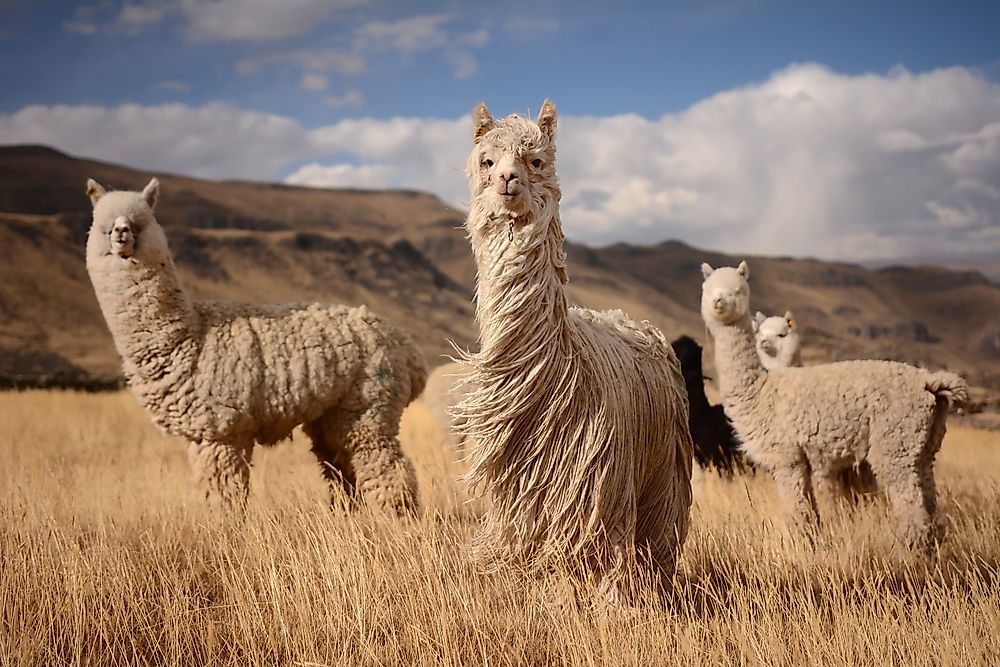What Is The Difference Between Llamas and Alpacas?

Alpacas and llamas are two different species of animals which are often thought to be the same due to their close resemblance. Other animals which resemble the two are the guanaco and vicuna which, together with the llama and alpaca, make up the four lamoid species. The llama and alpaca are closely related to the camel since they are part of the Camelidae family. Scientists believe the two species moved to their present habitat of South America from Europe after crossing the Siberian land bridge and later Isthmus of Panama millions of years ago.
Differences in Appearance
While they look alike, the two animals can be distinguished through their physical appearance. Alpacas are covered by a shaggy lush fleece which varies in coloration ranging from black and brown to white. The fleece from alpacas is used in the manufacture of textiles. Llamas, on the other hand, are covered by wool made up of coarse hairs. The heads of the two animals are also easily distinguishable with llamas having elongated faces while alpaca heads being blunt and have short ears.
Differences in Body Size
Another distinctive feature which differentiates the two animals is their respective body sizes. The alpaca is the shorter of the two animals, with adults standing 35 inches tall at the shoulder. Alpacas are also considerably lighter than llamas. The average weight of adult alpacas ranges between 121 and 143 pounds. In contrast, adult llamas stand about 47 inches in height at the shoulder. As the largest lamoid, llamas are also heavier than alpacas with adult llamas having an average weight of 250 pounds. Few exceptionally large individuals can weigh as much as 440 pounds.
Differences in Human Use
The different physical and behavioral characteristics of the two animals make them serve different purposes to humans. As an example, due to their timid disposition, alpacas are reared for their fleece. The fleece closely resembles sheep wool but is less prickly and generally warmer. The fleece is sheared off the animals and after being processed to fiber, is used in the knitting of fabrics. Adults can produce as much as ten pounds of fiber per animal. On the other hand, llamas and castrated males, in particular, have a guarding behavior where they will fight off any predators attempting to hunt them. This aggressive response to threats makes the llama an ideal guard animal, used to protect livestock such as goats and sheep against wild predators such as coyotes. However, to be an effective guard, the llama has to be introduced to the herd or folk of livestock at a young age. Being larger and hence stronger than alpacas, llamas are used for transport. The animals can carry well over 20% of their body weight in cargo for over five miles.
Similarities
The llama and alpaca are both native to Peru and Bolivia, and they share many characteristics. Both animals inhabit regions of the high altitude of over 10,000 feet above sea level. Besides being similar in physical appearance, the two animals also have equal lifespan with both llamas and alpacas having a lifespan of between 15 and 25 years. Both the alpaca and llama produce elaborate sounds which they use to communicate to other members of their respective species.











